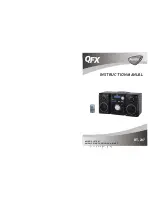
4. Special Situations & Equipment
Confined spaces can be hazardous.
Confined spaces are areas which lack room for full movement and often lack ventilation, such as storage tanks, vats, tunnels,
boilers, pipes, hold of a ship, corners of a room, near a ceiling or floor corner, or in a pit. Gases can collect and form dangerous
concentrations.
Always open all covers, remove any hazardous or toxic materials, provide forced ventilation, and provide a means to turn off
power and gas from the inside.
Never work alone — have constant communication with someone outside who can quickly turn off power and gas, is trained in
rescue procedures, and is able to pull you out in case of emergency.
Do not use AC weld output in confined spaces.
Insulate yourself from work and ground using non-flammable, dry insulating material if possible, or use dry rubber mats, dry
wood or plywood, or other dry insulating material big enough to cover your full area of contact with the work or ground, and
watch for fire.
Always check and monitor the air quality in the space. Welding or cutting fumes and gases can displace air and lower the
oxygen level — use ventilation and, if needed, an air-supplied respirator. Be sure the breathing air is safe. The recommended
way to determine adequate ventilation is to sample for the composition and quantity of fumes and gases.
Always remember: All normal arc welding and cutting hazards are amplified in confined spaces. See ANSI Z49.1 listed in
Principal Safety Standards (Section
9).
Cylinders can explode if damaged.
Confined spaces are areas which lack room for full movement and often lack ventilation, such as storage tanks, vats, tunnels,
boilers, pipes, hold of a ship, corners of a room, near a ceiling or floor corner, or in a pit. Gases can collect and form dangerous
concentrations.
Always open all covers, remove any hazardous or toxic materials, provide forced ventilation, and provide a means to turn off
power and gas from the inside.
Never work alone — have constant communication with someone outside who can quickly turn off power and gas, is trained in
rescue procedures, and is able to pull you out in case of emergency.
Do not use AC weld output in confined spaces.
Insulate yourself from work and ground using non-flammable, dry insulating material if possible, or use dry rubber mats, dry
wood or plywood, or other dry insulating material big enough to cover your full area of contact with the work or ground, and
watch for fire.
Always check and monitor the air quality in the space. Welding or cutting fumes and gases can displace air and lower the
oxygen level — use ventilation and, if needed, an air-supplied respirator. Be sure the breathing air is safe. The recommended
way to determine adequate ventilation is to sample for the composition and quantity of fumes and gases.
Always remember: All normal arc welding and cutting hazards are amplified in confined spaces. See ANSI Z49.1 listed in
Principal Safety Standards (Section
9).
13
Содержание TIGACDC250GD
Страница 1: ...TIGACDC250GD ...
Страница 2: ...1 Technical support 651 329 2686 www weldpro com Tel 651 342 1459 ...
Страница 3: ...2 STOP ...
Страница 6: ...Weldpro Safety 5 Weldpro Safety ...
Страница 32: ...e Picture 19 31 ...
Страница 37: ......
Страница 38: ......















































